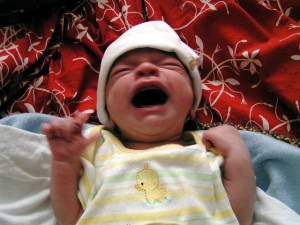The Daily Wisdom: The Crying of Ishmael
God responds to the crying of Ishmael and not the crying of Hagar. Ishmael represents the crying of the baby with which all life begins. Why does the baby cry? The baby is hungry, the baby is afraid, the baby is vulnerable, the baby is lonely. The baby’s cry is a primal scream of protest. The shofar on Rosh Hashana is called by the talmud “Yeulelei Yallil,” the howling of the wolf. It is a kind of intuitive shriek, a pre-personal crying expressing a feeling of threat and a deep need for protection. It is motivated at least in part by fear.
Fear, however, does not exhaust our characterization of a baby’s tears. There is also an element of what we might call “crying of protest.” Implicit in the baby’s protest is the rejection of the status quo. The baby seems to be saying, “I don’t want to be lonely, I don’t need to be lonely, this is not the way the world should be.” The baby symbolizes for us a vision of a better world. The baby who comes from a world of oneness and meets us in a world of duplicity and alienation still retains the power to remind us of this other world. Babies remind us of our dreams.
From The Dance of Tears
– Marc Gafni









